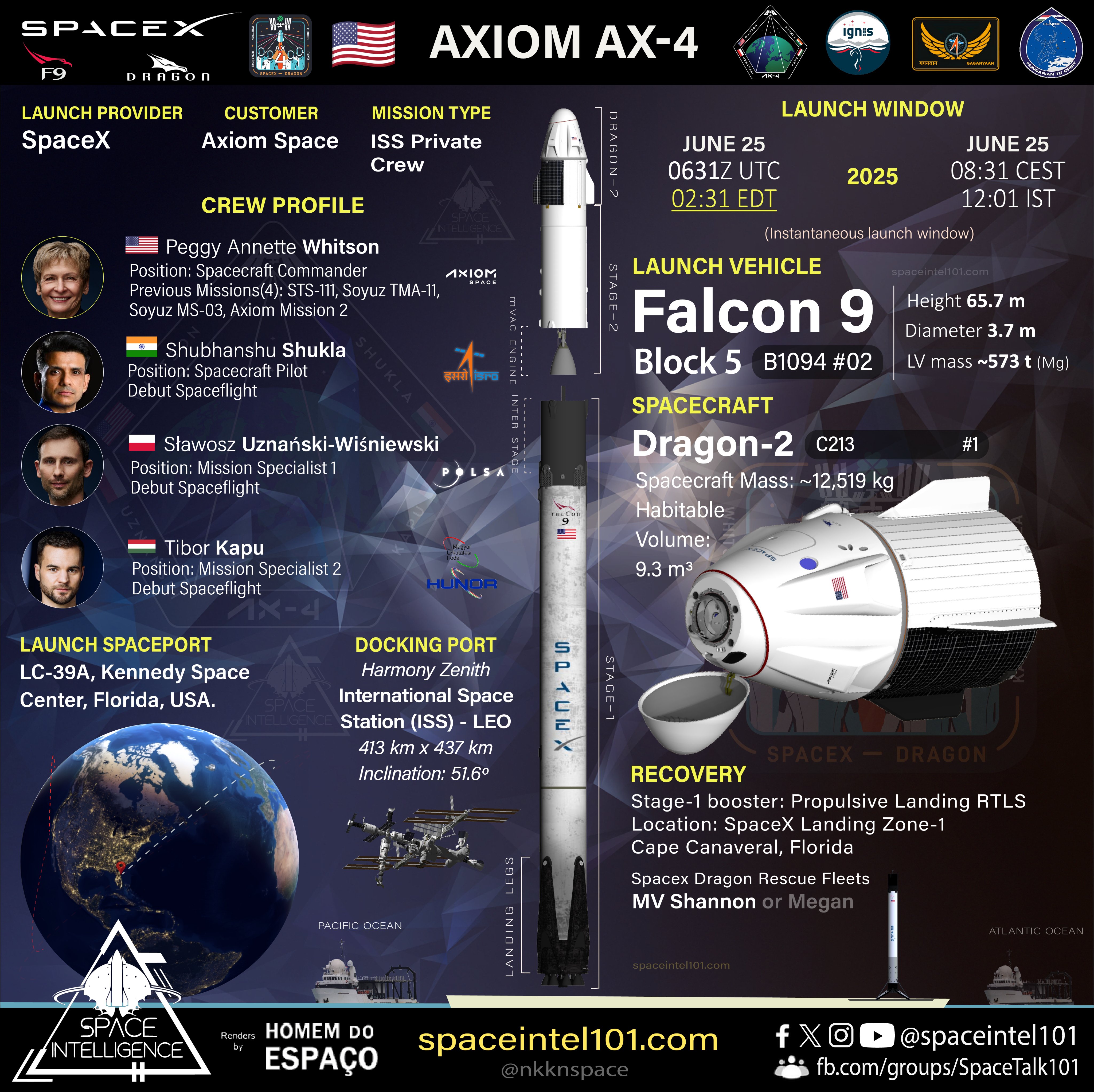When Indian Air Force officer and astronaut Shubhanshu Shukla blasted off on Wednesday as part of Axiom Mission 4 (Ax-4), it was aboard one of the most reliable rockets in spaceflight history — SpaceX’s Falcon 9 Block 5. Built by Elon Musk’s California-based aerospace firm, this human-rated, two-stage rocket has become a workhorse of the modern space era.
The Axiom-4 mission lifted off from Launch Complex 39A at NASA’s Kennedy Space Center in Florida at 12:01 pm IST, carrying a multinational crew to the International Space Station (ISS), with docking scheduled around 4:30 pm IST on June 26.
For India, this flight marks only the second time an Indian national has gone into space, the first being Wing Commander Rakesh Sharma in 1984. For the rocket itself, it is another chapter in a legacy of performance, precision, and reusability.

Falcon 9 Block 5: Precision, power and a 99.77% success rate
Originally launched in May 2018 with Bangladesh’s Bangabandhu-1 satellite, the Falcon 9 Block 5 is a medium-lift launch vehicle designed to carry both astronauts and cargo into various orbits. Its most revolutionary feature is its partial reusability — the first stage is capable of autonomous landing and reuse, drastically reducing launch costs and turnaround time.
The rocket is powered by nine Merlin engines, which use a combination of liquid oxygen (LOX) and RP-1 kerosene as propellants. It also features three backup flight computers, and critically, the system is designed to complete a mission even if one engine fails mid-flight.
Certified by NASA in November 2020 for crewed spaceflight, Falcon 9 became the first commercial spacecraft system to receive such approval since the US Space Shuttle in 1981. It has since completed 16 human missions with a 100 per cent safety record. As of June 2025, the Falcon 9 has been launched 438 times, with 437 successful missions, placing its reliability at an extraordinary 99.77 per cent.
Technical capability and global role
The rocket can lift up to 22,800 kg to Low Earth Orbit (LEO) if flown only once, or 18,500 kg when reused. It can transport up to 8,300 kg to more distant orbits, such as Geostationary Transfer Orbit (GTO).
Also read: Shubhanshu Shukla takes flight to space, 2nd Indian to do so
Among the missions Falcon 9 has undertaken are NASA scientific satellites like DART and PACE, GPS constellations, Starlink broadband arrays, and even payloads for ISRO — including Shukla’s Axiom-4 mission, which stands as a milestone in Indo-US commercial space collaboration.
Designed for flexibility, it is equipped with titanium grid fins for controlled descent, a heat shield, and retractable landing legs that have allowed first-stage boosters to land vertically and be flown again — a feature once considered science fiction.
A rocket for the future
With Shukla onboard, India joins a growing list of nations leveraging commercial platforms like Axiom and SpaceX for human spaceflight training and international cooperation. The Falcon 9’s proven capability not only facilitates such partnerships but also supports future missions to the Moon, Mars, and private space stations, where reliability and cost-efficiency will be critical.
In carrying Shukla and his crewmates safely beyond Earth’s atmosphere, the Falcon 9 did more than execute a launch — it embodied a new era of democratised, commercial access to space, powered by engineering innovation and international ambition.


